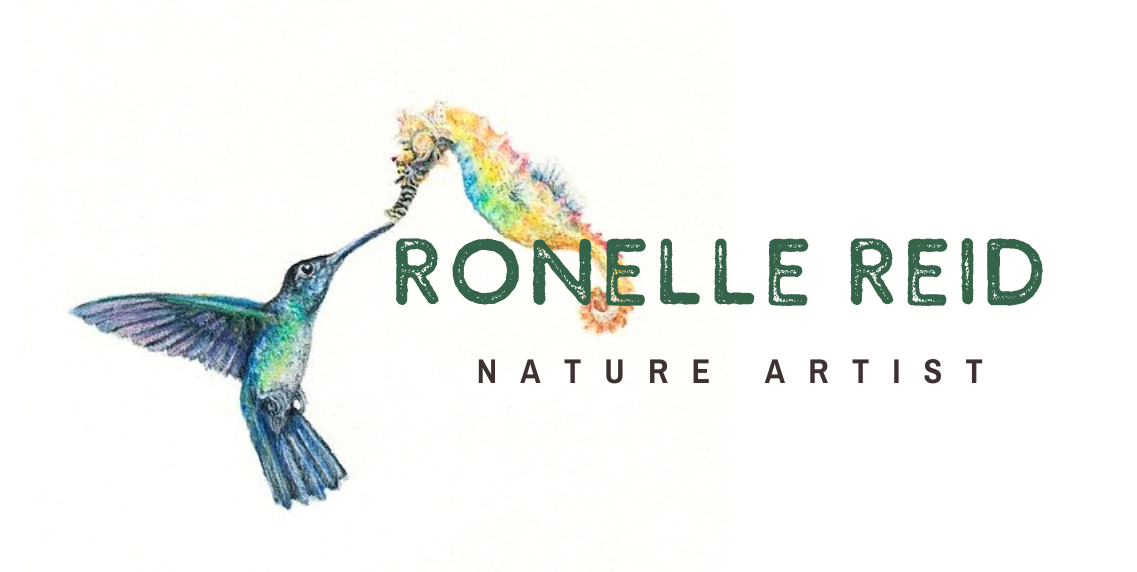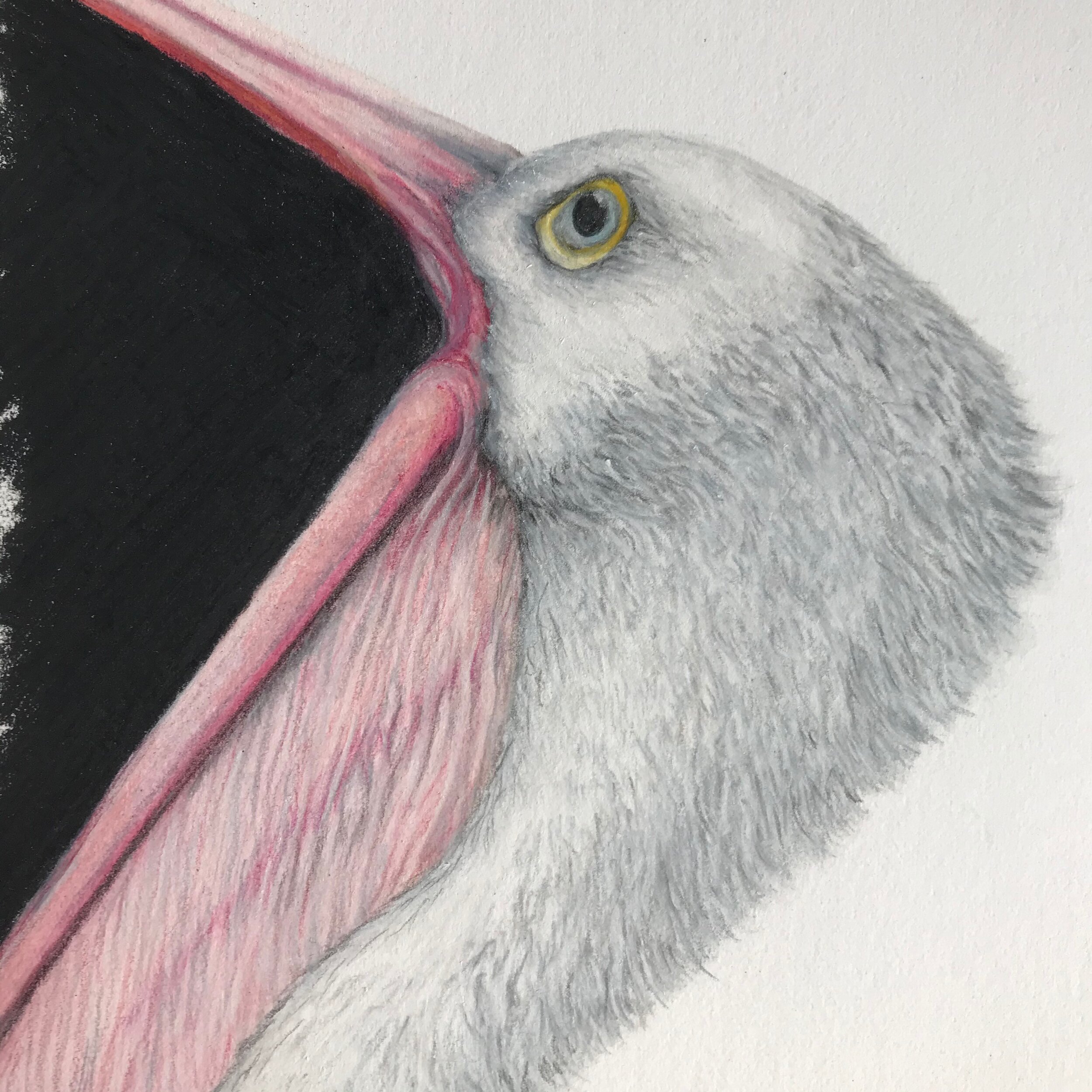“Circadian Rhythm”
Water colour pencil and oil on mounted Fabriano paper.
75cm wide x 50cm high
$1668.00
When looking at what animals live in the Logan region it is easy to forget our nocturnal animals. This work looks at the natural lives that happen during the diurnal nocturnal cycle.
Our first diurnal bird is an Australian Pelican. Next, we have a nocturnal bird, the Tawny Frogmouth. both of these birds are listed as Least Concern IUCN Redlist.
Then we have the diurnal Regent Honeyeater. They are Critically Endangered on the IUCN Redlist and finally we have the Chocolate-wattled micro-bat listed as Least Concern IUCN Redlist.
Also featured in this work is a mangrove. I didn’t realise before starting this work that mangroves also have a night and day cycle. with the stems swelling at night and reducing during the day. These fascinating plants are essential for our ecosystems they can live in salt water, absorb more carbon than trees on land, provide essential habitat to many species of fish, invertebrates, mammals and fish.
What is today of least concern can easily change to endangered in one lifetime if we do not help ecosystems to survive?
Drawing in the tiny micro-bat. My pencils could not be sharp enough.
Detail of the pelicans head.
I had so much fun drawing the “black” feathers of the pelican with blue and green highlights.
Framed and ready to hang
Detailed photo of the tawny frogmouths feathers.
Drawing a mangrove was a new adventure for me. I haven’t worked on botanicals before.







